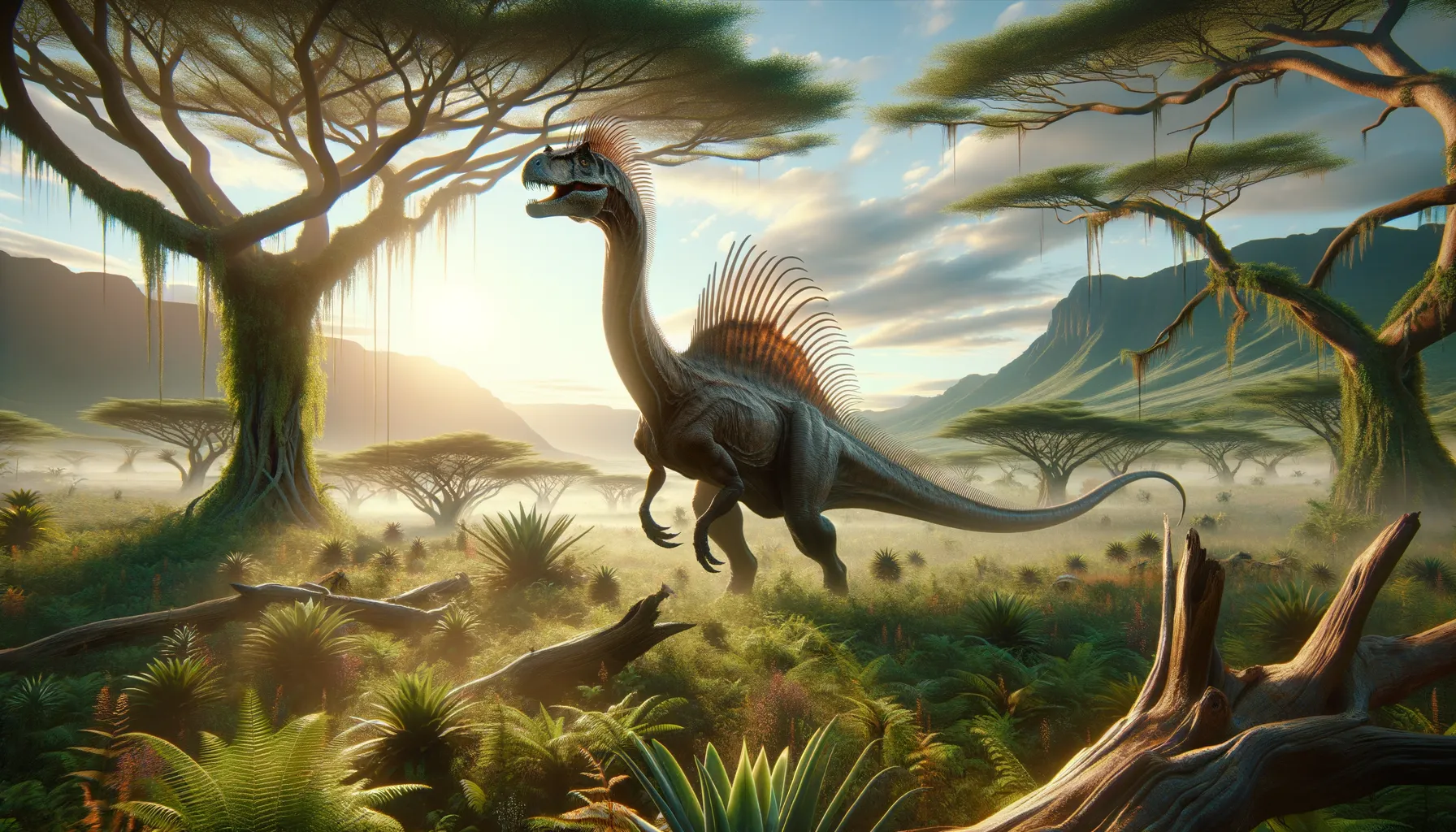
Spinophorosaurus
The gentle giant with a spiky tail.
Period
Jurassic
Length
Roughly 14 meters in length.
Height
About 5 meters tall.
Weight
Approximately 7 tons.
Spinophorosaurus is a long-necked sauropod dinosaur from the Middle Jurassic period. Known for its spikes and whip-like tail, it was a gentle giant that roamed ancient landscapes in what is now Africa. This dinosaur played a crucial role in the ecosystem, helping to shape the vegetation by consuming substantial amounts of plant material.
Diet
Spinophorosaurus was a herbivore, mostly feeding on plant material. Its long neck allowed it to reach high vegetation, giving it access to food sources other herbivores couldn't reach.
Hunting
Being an herbivore, Spinophorosaurus did not hunt other animals. Instead, it spent most of its time foraging for plants and keeping a constant look out for predators.
Environmental challenges
Spinophorosaurus faced challenges like finding enough food in areas with limited vegetation. Additionally, it had to navigate and live among large predators, often in harsh climatic conditions. Seasonal changes would have also affected food availability, requiring adaptations in feeding strategies.
Speed
Slow-moving due to its large size.
Lifespan
Estimated to live several decades.
First discovery
Discovered in Niger in 2009.
Fun Facts
- Spinophorosaurus is a dinosaur that lived about 167 million years ago during the Middle Jurassic period.
- Its fossils were found in Niger, Africa, making it one of the few dinosaurs known from that continent in this period.
- Spinophorosaurus had a long neck and tail, making it look somewhat like the famous Brachiosaurus.
- It had a unique feature for a dinosaur: small bony clubs at the tip of its tail, which might have been used for defense.
- Despite its large size, Spinophorosaurus was an herbivore, meaning it ate plants.
- It is thought to have lived in groups, which could have offered protection against predators.
- The name 'Spinophorosaurus' means 'spined lizard', referring to the spiky bones that were part of its body.
Growth and Development
Young Spinophorosaurus would have been much more vulnerable to predators, and they grew rapidly to deter threats. Growth involved substantial energy investment to reach their massive adult size, crucial for protection and survival in their environment.
Habitat
Spinophorosaurus inhabited lush environments with plentiful vegetation, such as forests or areas near water sources. These habitats provided the necessary resources for sustenance and protection from predators.
Interaction with other species
It likely coexisted with both predators and smaller herbivores, keeping a watchful eye on potential threats. Its large size would deter many predators, but younger or weaker individuals might still fall prey.
Natural lifespan
Spinophorosaurus could have lived up to 70 years.
Reproduction
Like many sauropods, Spinophorosaurus likely laid eggs, possibly in nests made in soft ground. Females probably took care of the nest by covering the eggs with vegetation to keep them warm until they hatched.
Social behaviour
Spinophorosaurus might have lived in herds, offering protection to younger and weaker members. This social structure would have aided in finding food and warding off predators.
Fossil locations
Fossils of Spinophorosaurus have been primarily found in Niger. These discoveries contribute significant knowledge about the Middle Jurassic fauna of Africa, providing insight into the past ecosystems where this dinosaur lived.
